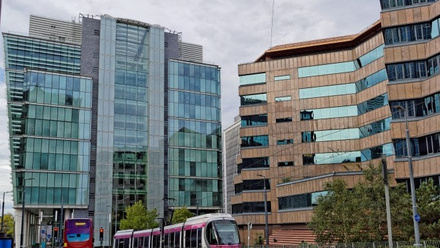Red light therapy for repairing spinal cord injury passes milestone

Patients with spinal cord injury (SCI) could benefit from a future treatment to repair nerve connections using red and near-infrared light.
The method, invented by scientists at the University of Birmingham and patented by University of Birmingham Enterprise, involves delivering light directly to the site of the injury.
Their latest research, published in the journal Bioengineering and Translational Medicine has determined an optimal ‘dose’ for this novel therapeutic approach, and shown that it can deliver significant therapeutic improvements including significant restoration of sensation and movement, and regeneration of damaged nerve cells.
Researchers led by Professor Zubair Ahmed (pictured) used cell models of SCI to determine the frequency and duration of light required to achieve maximum restoration of function and stimulate nerve cell regrowth.
They found that delivery of red light at a wavelength of 660nm for one minute a day increased cell viability (a measurement of the number of live cells) by 45 per cent over five days of treatment.
Professor Ahmed said: “Excitingly, this aspect of the study showed the effect of 660nm light was both neuroprotective, meaning it improved survival of nerve cells, and neuroregenerative, meaning it stimulated nerve cell growth.”
The researchers also investigated the effect of light therapy in preclinical models of SCI. Here they used two different methods, an implantable device and transcutaneous delivery, where the light source is placed against the skin.
Their study showed comparable results for both delivery methods, with a one-minute dose of 660nm light, delivered daily for seven days, resulting in reduced tissue scarring at the site of injury, and significant functional recovery.
The researchers also found significant reductions in both cavities and scarring as well as increases in the levels of proteins associated with nerve cell regeneration and improvements in the connections between cells in the injured area of the spine.
This is the first time transcutaneous and direct delivery of light have been compared in SCI, and the results are a milestone for the researchers, who have already received further funding and are planning to develop an implantable device for use in humans with traumatic SCI, where there are currently no approaches that preserve cells or improve neurological function.
Mr Andrew Stevens, first author of the study and Neurosurgery Registrar said: “Surgery after spinal cord injury is common, but currently these operations are only aimed at stabilising injuries to the bones of the spine that have been damaged by the trauma.
“This concept is incredibly exciting as it could offer surgeons the opportunity during the same operation to implant a device which could help protect and repair the spinal cord itself."
Professor Ahmed continued: “To make light therapy viable for treating SCI in humans an implantable device will be required, to provide line of sight to damaged tissue and the opportunity for greater accuracy and standardise dosing, without impedance due to the thickness of skin and other tissues surrounding the spinal cord.
Photobiomodulation (PBM) may provide a viable therapeutic approach using red or near-infrared light to promote recovery after SCI by mitigating neuroinflammation and preventing neuronal apoptosis. Our current study aimed to optimize PBM dose regimens and develop and validate the efficacy of an invasive PBM delivery paradigm for SCI.”
The research team is now seeking commercial partners or investors to take the next steps towards developing a prototype device that can be taken into first-in-man clinical trials.



